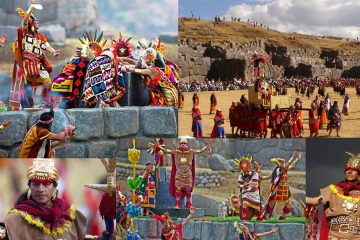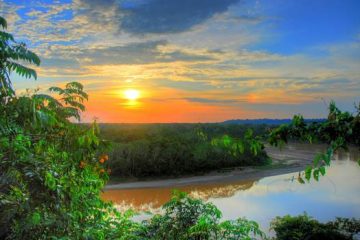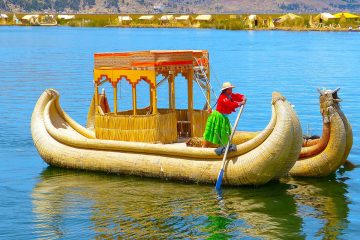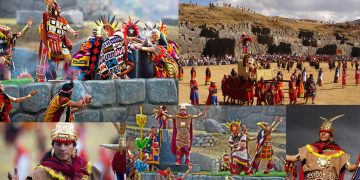
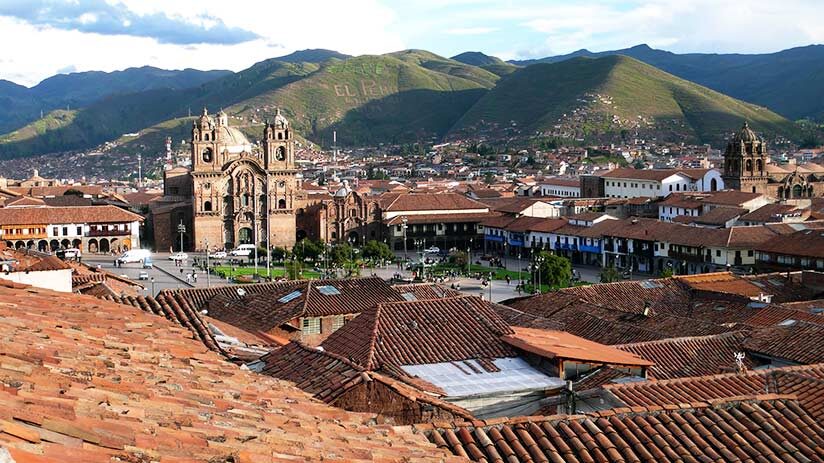
Cusco is recognized as the navel of the world according to the Inca belief and was the home of the Empire of the same name, from where it was born. In the time of the Incas, the city had a huge main square where all the protocol ceremonies were held. There were many ornate temples around it, with narrow alleys and rivulets among others. Today, this is the main reason why Cusco is called the Rome of America. However, the Spanish arrived there, extracting precious objects from its buildings and sending most of the gold, metals, and luxury decorations to Spain. Of course, they dismantled the majority of the temples and build over them catholic edifications (with the pretext of imposing the Catholic religion over the pagan Inca). Nowadays, you can only see the foundations of the Inca buildings, and each excavation or City renovation reveals more Inca walls mixed with Spanish buildings, besides facilities purely Incas of a millennial city that never ceases to amaze us.
1. MACHU PICCHU
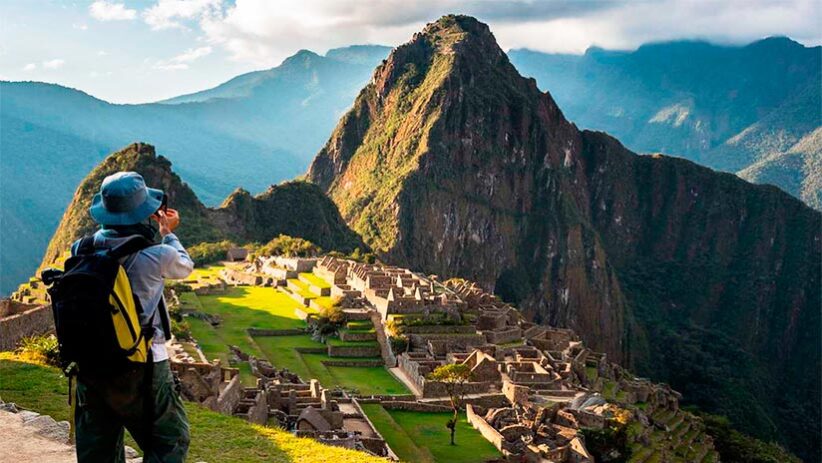
One of the new seven wonders of the world. The icing on the cake in any South American tour package. We are talking about Machu Picchu. Being able to visit the amazing Inca Citadel is a unique experience in life. The conquerors Spanish never could find it, and the citadel remained intact to this day. To get there, you can walk the pilgrimage route that the ancient Incas used to do, called Inca Trail. However, if you prefer a luxury route with more commodities, you can take a tour on the many scenic trains to Machu Picchu. Whatever your decision, both options will take you to enjoy the magical Inca citadel.
2. SAN BLAS NEIGHBORHOOD
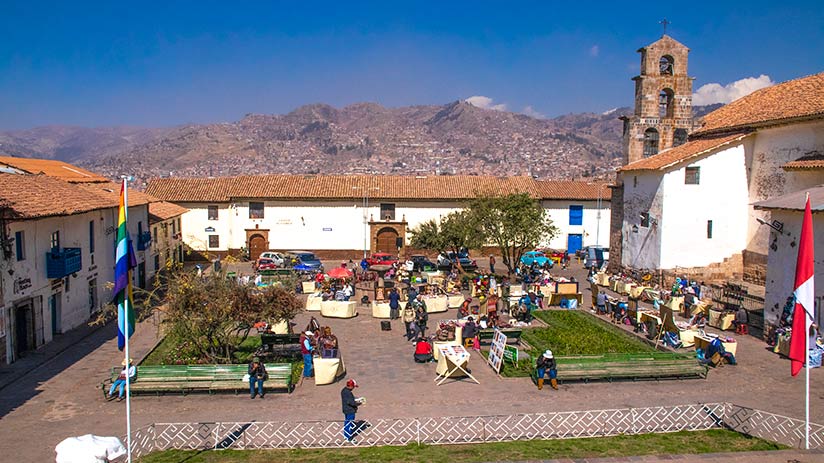
The San Blas neighborhood in Cusco should be on your list of places to go. This unique place is located on a hill behind Cusco Cathedral and is a popular tourist hub for locals and newcomers, where one can relax, eat and have a fresh beer. Known as the local artists’ neighborhood, the area has a small square surrounded by restaurants, and bars and is frequented by non-locals who want to know about the local life of Cusco inhabitants. There, you will find many vegetarian restaurants, art workshops, souvenir shops, bars, and much more. Not to mention its viewpoint, which offers amazing views of the Historic Center of Cusco and is located behind the San Blas main square. Many years ago, there was a meeting point and flirting of local youth. What stands out the most in Plaza San Blas is the Church. It is quite simple from the outside. But inside, you will see one of Cusco’s main attractions: an intricately designed wooden pulpit, Baroque. There are many myths about its creation, and there is an audio guide available that will tell you a few of them. If you are looking for unmissable points in Cusco, San Blas is an obligatory stop, undoubtedly!
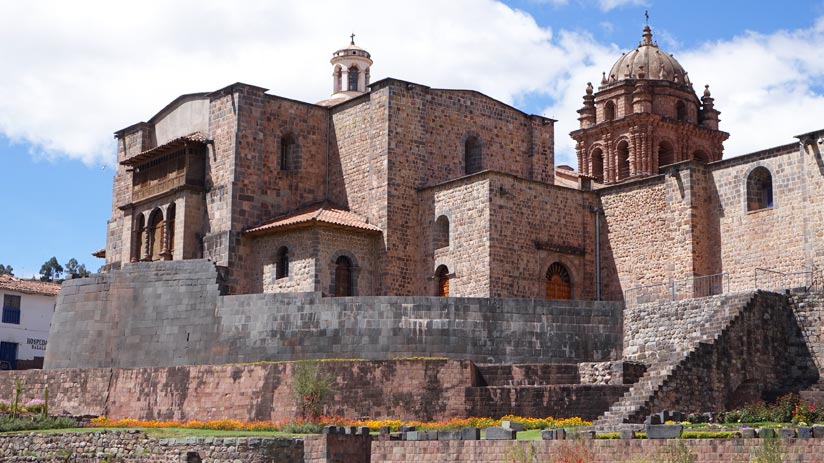
From the Plaza, walk along Av. Sol in a north-to-south direction and you will arrive at the Coricancha complex, also known as the Convent of Santo Domingo. This was the most important temple of the Inca Empire: La Casa del Sol. It is believed that all the walls were once covered with a fine sheet of solid gold, while the courtyards and niches featured heavy gold statues. When the Spaniards arrived in Cusco in 1533, they were amazed at the gold that covered the walls of the temple. Of course, they dismantled it, used its stones to build the city’s Cathedral, and on its foundations, they also built the current convent of Santo Domingo. Happily, nowadays, you will find the Inca foundations remain unchanged. In conclusion, admiring its architecture is one of the best free activities that Cusco offer to visitors.

If you knew that China has the only rainbow mountain in the world, you are mistaken, Cusco has its own one, too! Due to climate change and global warming, the snow that covered the mountain melted, discovering a colorful landscape in front of the local people of Pitumarca. Precisely, the rainbow mountain is a mineralized mountain of different tones, similar to a zebra, that goes from orange to green color, located in Vinincunca hill, over 2500 meters above sea level, in the district of Pitumarca, Canchis province, department of Cusco (Yes, the department which contains Machu Picchu, too) At 100 km southeast of Cusco. To go there, you need to take bus transportation from Cusco to Pitumarca (03 hours of trip), once there begin to walk (trekking) for around 3 hours, and finally, get to the amazing rainbow mountain. We recommend you do this tour through a travel agency, you will not regret it!
5. SIETE BORREGUITOS STREET
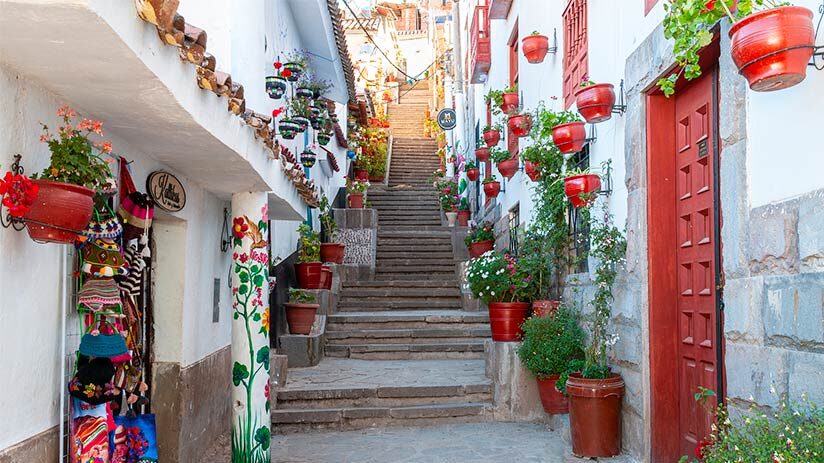
This quaint alley is the most instagrammable street in Cusco. It is located 5 blocks north of Cusco main square and is super walkable. The street is decorated by adorable flower pots hung on over white walls, on each side of the street. This charming view is completed by well-lacquered balconies and gates. The street descends from the end of Pumacurco street to the final of Choquechaca street (Sapantiana aqueduct), connecting them. History says that, in colonial times, many women went down from Pumacurco street to the Sapantiana aqueduct (Choquechaca stream) to wash rags and baskets, accompanied by their sheep, which they would go to graze later. Over time, the people of Cusco identified this alley as “Borreguitos” (lambs) and years later they renamed it “Siete Borreguitos” (seven lambs) because of the proximity of the street to other roads with the nickname “Seven”. Not to mention, the great hotels in Cusco, like Marriott, Hilton, Monasterio, or Nazarena`s Palace that are close to it. This street should be a mandatory stop in your Cusco Journey.
6. THE SACSAYHUAMAN COMPLEX
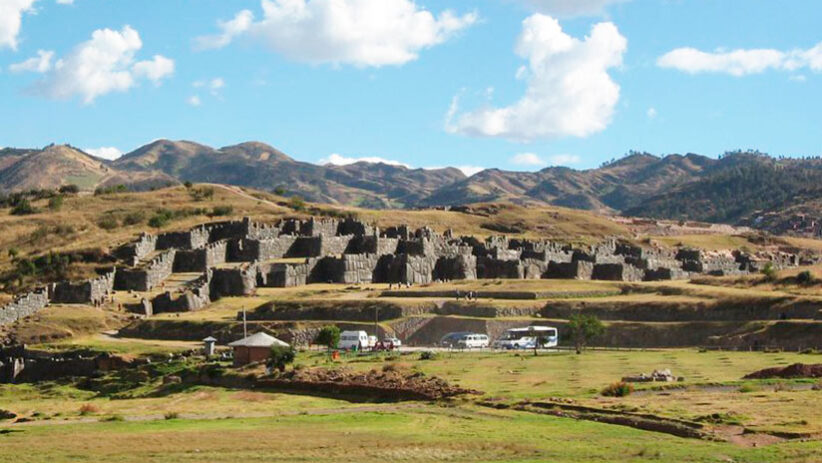
On the outskirts of the city are four Cusco archaeological sites that you should take the time to visit. These are Sacsayhuaman, PukaPukara, Tambo Machay, and Qenko. Of course, all of them gathered in only one Archaeological park called Sacsayhuaman. Each one was of significant importance to the Incas until the Spanish arrived, who destroyed them to take their stones to build the Catholic churches in the new city of Cusco. If you choose to take the popular “City Tour”, these ruins will always be included as part of the itinerary. Definitely, these ruins are worth an exclusive visit, so take some time to discover them. The fortified complex of Sacsayhuaman is one of the must-see places in Peru. To get to the well-known complex, you have a 45-minute walk from the city center heading north, taking Suecia street, then continuing Don Bosco street until the end of the road. Or, much less time if you go by car. According to historians, Sacsayhuaman had a religious and military function, serving as a fortress, a place of surveillance, a barracks, and a center of worship for the god Lightning (Illapa). The form of construction of its giant walls is a great mystery to this day, with stone blocks weighing up to 300 tons each. Being able to visit the place is an incredible experience for the varied and beautiful views that you will be able to observe. One of the best things to do in Cusco, don’t miss it for anything.
A. QENQO An Inca center of worship to Sun and Pacha (Earth) gods. Qenqo means labyrinth in the Quechua language and its name is due to the large carved stone with small grooves in the form of corridors of a labyrinth, which is located in the center of the place. In addition to a large table for preparing animal sacrifices for the gods.
B. PUKA PUKARA It was an Inca military headquarters with large walls, terraces, and big stairs among others. The building was used as a surveillance center for threats emerging from north of Cusco, like the Chankas (a rebellious town in the Abancay area). Puka means red in the Quechua language and was due to the color red reflected by its stones in the sunsets during the Dry season.
C. TAMBO MACHAY Its name means place of rest, and this was its function. The Inca sovereign passed a large time there with his entourage, haunting or taking walks. The place is the farthest from the same Sacsayhuaman. It has complicated systems of small aqueducts that end in two small waterfalls of pure water. Therefore, it could also serve as a worship center for water.
7. THE CATHEDRAL OF CUSCO
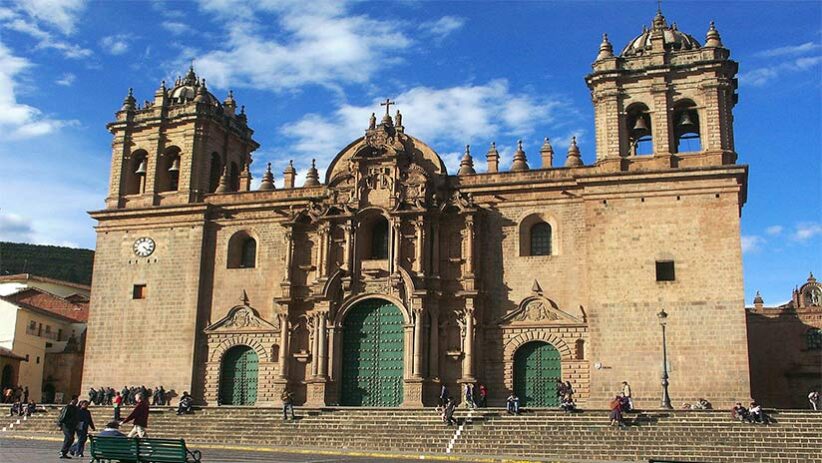
The main church of Cusco took more than 100 years to be completed, from 1559 to 1669. Spanish built it over an ancient Incas temple belonging to Wiracocha Inca, to impose the Catholic religion over their pagan one. With a Renaissance style inside, 14 giant pillars, 24 vaults, and a Baroque facade, the Cathedral represents a real palace for the Catholic religion in southern Peru and the main art museum of an artistic trend that achieved worldwide fame between the 16th and 17th centuries, the “Cusco school” The “Cuzco School” artistic trend was a conjunction of mannerism style, imitation of the high European renaissance, and tenebrism, the initial phase of western baroque over local paintings with Catholic themes. In this form, Jesuit, and Dominican friars among others taught European painting techniques to the Inca descendants, in a way of instilling in them the Christian faith. However, they painted virgins, saints, and angels with some Andean traits, such as virgins with Andean hill forms, brown saints, and inter alia. In this way, the “Cusco school” was born. Separate note, we have to mention the Triunfo (Triumph), a church situated on the left side of the Cathedral. History says that the Triunfo is situated inside old churches in Cusco list, if not the oldest. In 1536, after the siege of the Incas against the Spaniards, the Europeans took refuge in this church, asking the Blessed Virgin for help and witnessing her appearance in the church, to later win the battle against the Incas. In this form, Triunfo Church was used as a Cathedral until the construction of the new one in 1669. Another important mention is the La Sagrada Familia (The Sacred Family) chapel, which is located on the right side of the Cathedral, it was used as a place for Catholic weddings and minor masses. But, rest assured, both attractions are included in the Cathedral of Cusco tour, the entrances cost 40.00 Soles ($11 per person) As we said previously, the architecture of Cusco is something you cannot lose sight of since you will find it everywhere, especially if you can visit its imposing churches. These amazing buildings remind us of the relentless Spanish conquest and its invasive way of imposing its religion. Even so, they are a spectacle for the eyes of any tourist to be able to contemplate the wonderful architecture. If you have planned to do a city tour in Cusco, you cannot miss its main churches. The most known are: La Compañía de Jesús San Francisco church The Minor Basilica of La Merced
8. SAPANTIANA AQUEDUCT
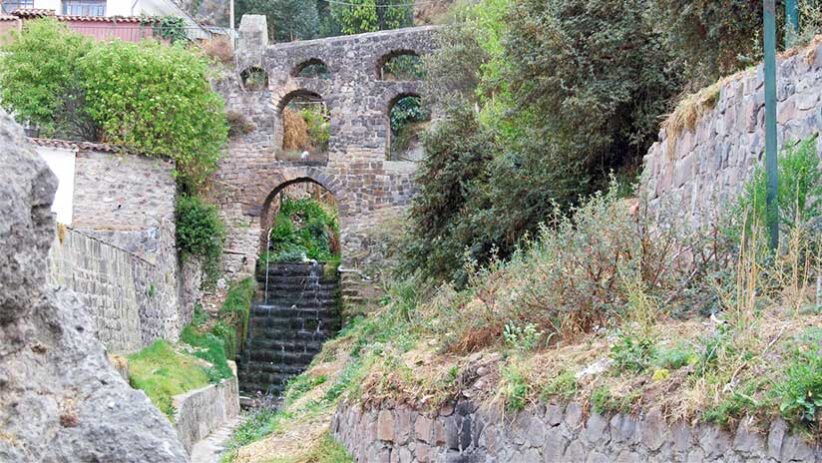
From now, if you want to take a perfect photo of your Cusco journey, Sapantiana Aqueduct is your place. This aqueduct was built in 1565 (Peruvian colonial period) and was promoted by the Jesuit order and the council of Cusco to provide water to the downtown area of the city, where the wealthy Spanish class lived. This is a colonial wall formed by 4 levels of arches, which contain carved stones brought from Sapantiana quarry. Until 1950, the water still flowed by the canal above. However, today, you can still see a slight flow of water running down over its stone steps. This quaint site is located at the end of Choquechaca street, 2 blocks from the main square.
9. TRADITIONAL SAN PEDRO MARKET
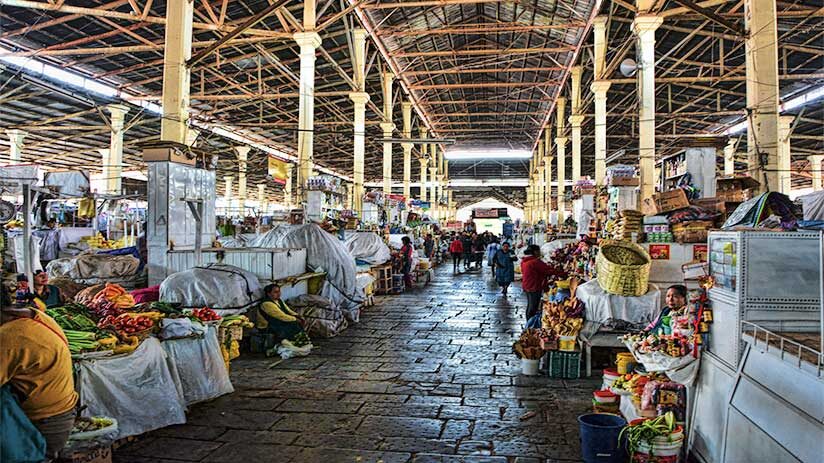
Very close to the Plaza de Armas, you can enjoy one of the most principal and busy markets in Cusco, the San Pedro market. This market is a carnival for the senses, and you will see everything from tourist souvenirs. going through stalls selling meat, fruit, vegetables, rose shops, exotic food like toads, to medicinal herbs. The Mercado de San Pedro is a perfect opportunity to meet the tastes of the locals and marvel at everything they offer. When you first enter, there are a variety of beautiful souvenirs on offer for sale. Walk further down the market, and you’ll find stalls selling fresh juices of any variety you choose. Following, you’ll see the people who sell all kinds of fruits and vegetables and even meat and chicken. For an inexpensive meal, you can try a menu that includes an inexpensive soup, entrée, and drink. These food stalls will be packed with locals having lunch, so look for the most popular ones. Among all the famous places in Peru, this market occupies an important position, so you cannot miss it.
10. THE CRISTO BLANCO STATUE
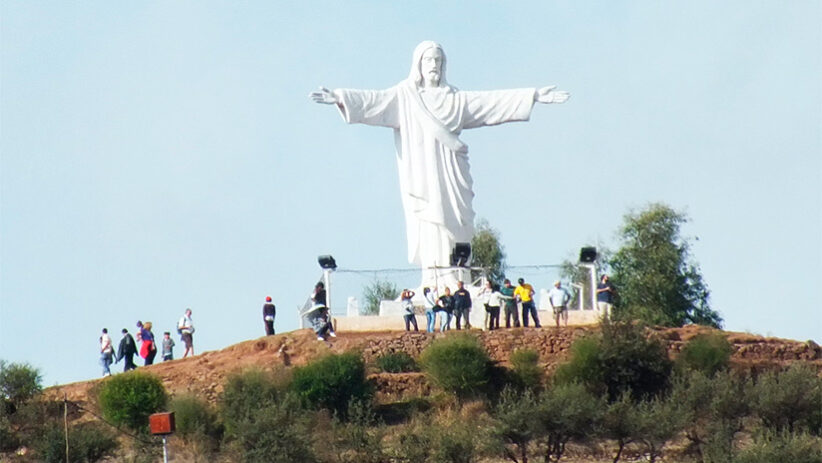
If Rio de Janeiro in Brazil has its Christ the Redeemer statue, Cusco has its own. The Cristo Blanco or white christ of open arms is a giant statue of 8 meters large, covered with marble and plaster. It was a gift from the Palestinian Arab community to the city in 1945, due to its hospitality during the second world war. It is located in the surroundings of Cusco (the North part) and you can get amazing views of the City from there. To get there, you can hire a taxi from Apps. The cost of service is around 40 Soles ($11) including 30 minutes of wait at the place to get the best photos.
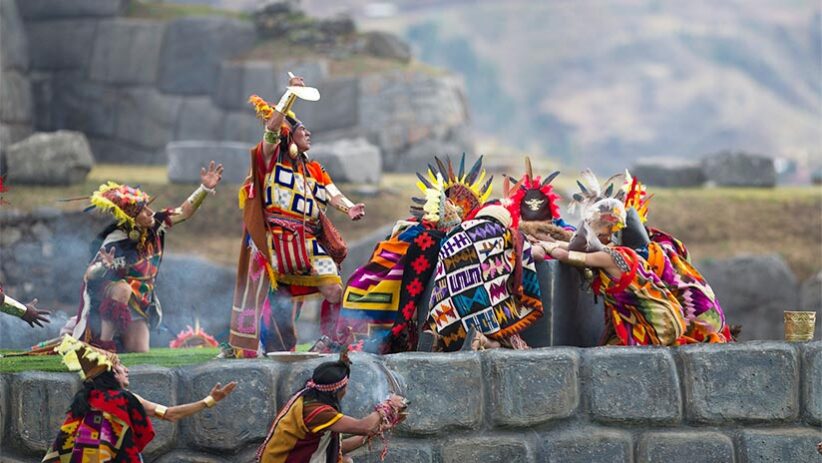
However, if you want to see a staging throughout all of Cusco City, outdoors, with more than 300 local dancers and actors, dressed in Inca clothes, fabrics, and jewels, you will have to see the Inti Raymi. This Inca festivity was recovered in 1944 by a group of Cusco scholars. The festivity was the most important for the Incas, and it was dedicated to the Sun god. In this form, each June 24, in the Winter Solstice, when the sun is located farthest to the earth, the Incas called it through dances, music, and even human sacrifices, to feel its warmth again. The Qoricancha or Sun Temple (Current Santo Domingo church), the Main Square, and the Sacsayhuaman fortress are the chosen places where the Inti Raymi is staged. The two first places are free to enter, however, the last place has a cost ticket of around $100 and the same municipality sell these. Therefore, if you want to appreciate this great show, we suggest you contact a local travel agency to get your entrance in advance because these usually are sold out.
12. THE VIEWPOINT OF SAN CRISTOBAL
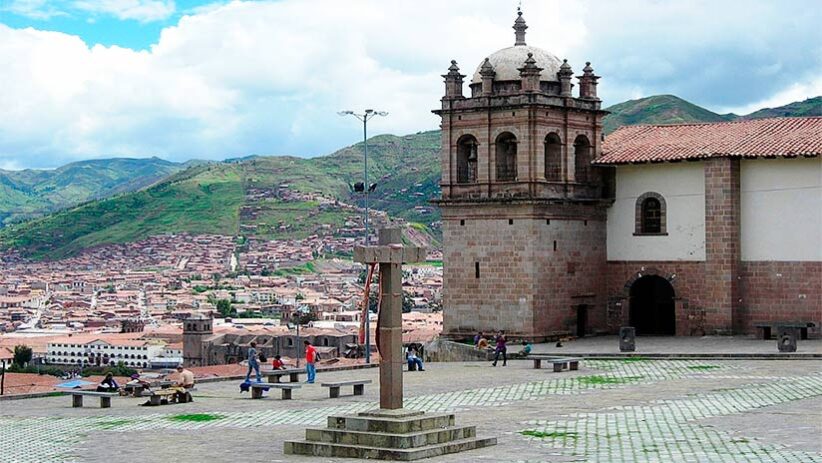
Another great thing to do in Cusco is to be able to enjoy the breathtaking views of the city, among them, is located San Cristobal’s point of view. You’ll find it walking by 15 minutes from the main square, taking the “Suecia” street and continuing the “Don Bosco” street. This is a little plaza located on one side of San Cristobal Catholic Church, where you’ll find a great view of Cusco city, besides stone benches and 11 giant Incas niches located behind the complex. These belonged to an ancient Inca Palace, the Qolqampata. Many scholars suggest, according to the imperial bloodline, that Qolqampata was the palace of the first Inca called Manco Capac. Therefore, later, the palace was used as a royal cemetery for the Inca nobility. When the Spaniards arrived, they decided to build Catholic churches over ancient Incas palaces (in case, they could not destroy a palace, they built their Christian buildings next to them, as is the case of San Cristobal). All this was a form to impose quickly the European religion over the pagan. The San Cristobal church is a modest building that does not have the beauty and decoration of its peers in the city. However, its highlights of it are a high altar decorated with embossed silver, a gigantic sculpture of San Cristobal, and an Ushnu Inca (a place where the Incas made payments to mother earth). Its architect was a relative of the last Incas Huascar and Atahualpa and the son of Huyana Capac Inca, Paullo Inca Yupanqui. Who, once converted to Christianism, decided to adopt the name of its Spanish godfather, Cristobal Vaca de Castro, beginning the San Cristobal church construction. Nowadays, its bell tower of the XVII century offers another great view of the city besides the viewpoint. The entrances cost $3 per person and is worth it.
13. THE SACRED VALLEY OF THE INCAS
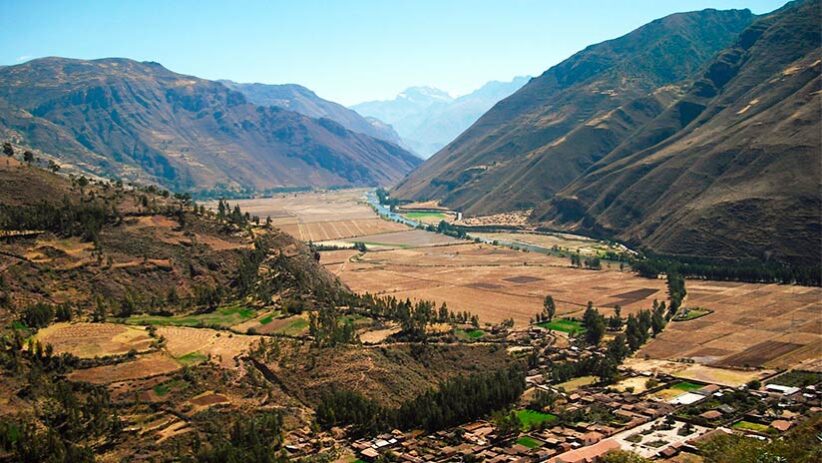
For years, a visit to the Sacred Valley of the Incas was one of the best things to do in Cusco. This zone is located outside the city, at 73 kilometers of distance, and it is called Sacred because the Incas found there, fertile lands for their crops, in addition to an excellent warm climate and a crystal clear river like El Vilcanota. In addition, the Sacred Valley zone is formed by 5 important Incas attractions:
A. PISAC Was an ancient Inca settlement with Andean terraces, temples, plazas, fortresses, watchtowers, and even a cemetery. Nowadays, all of them are over a hill called Pisac (the name of a native bird that abounds in the place) It is located at the beginning of the Valley, over the south part, at 33 km from Cusco. Over its slopes, a little town with a quaint handicraft market is located today. Both, the handicraft market of Pisac and the archaeological park should be obligatory stops on your Sacred Valley tour.
B. OLLANTAYTAMBO It is located on the opposite side of Pisac, in the north zone of the valley, 90 km from Cusco. It was the last refuge of the Incas in the Andes, during their escape from the Spanish invaders heading Jungle deep. The fortress received the name of its regent, the famous General Ollanta (protagonist of the colonial theatrical play of love, and betrayal called Ollantay). Nowadays, the local town is located on the feet of the Ollantaytambo fortress and maintains its Incas buildings and squares, without changes or modification, being considered a living Inca village. Therefore, if you travel to Ollantaytambo, you will travel back in time, undoubtedly.
C. CHINCHERO The local town of Chinchero is located over an alternative route to get to Sacred Valley, on the west side of it. 28 km from Cusco. Chinchero stands out more for being a colonial town than for an Inca one. Its colonial church is a synonym of a picture museum with invaluable pieces of art belongings of “Cusco school”. In its main square, each Sunday, people of surrounding towns come to interchange their products like potatoes, corn, and even animals, in a practice that dates back to the Inca period, called the barter. Without mentioning its textile demonstration centers where visitors can see the process to extract wool from the llamas, alpacas, and vicuñas, its dyeing process, and the production of clothes. With the possibility of buy of these products!
D. MARAS The salt mines of Maras are more than 3000 salt wells located over the slopes of Qaqawiñay mountain, 50 km from Cusco, near Chinchero. These mines have producing salt since the Incas times and today, these are worked by the local people of the close town of Maras. Visiting them and enjoying their whiteness, walking between the welles, is a unique experience inside your list of the unmissable points to be visited in the ancient Incas capital. Also, we recommend you visit Cusco and include this great place in your itinerary. Just in case, recognized Peruvian chefs recommend the salt of Maras to season the beef for perfect grills, and you can buy them, there.
E. MORAY If you were wondering, how the Incas were able to obtain a high level of agricultural knowledge to cultivate in the wildlands of the Andes, Moray can be the answer. Moray is a series of circles that go into the earth, a spectacle for the view! Each circle represented a level of altitude in the Andes, to scale. Consequently, they planted one type of corn and potato in each circle, from the outermost to the innermost, to see the type of planting and product they obtained, choosing only the best beans. Therefore, Moray is considered an Inca Agricultural Research Center. Also, these circles are located near Maras, 38 km northwest of Cusco. Another inevitable point inside your list of interesting points to visit in Cusco.
14. THE TWELVE ANGLED STONE
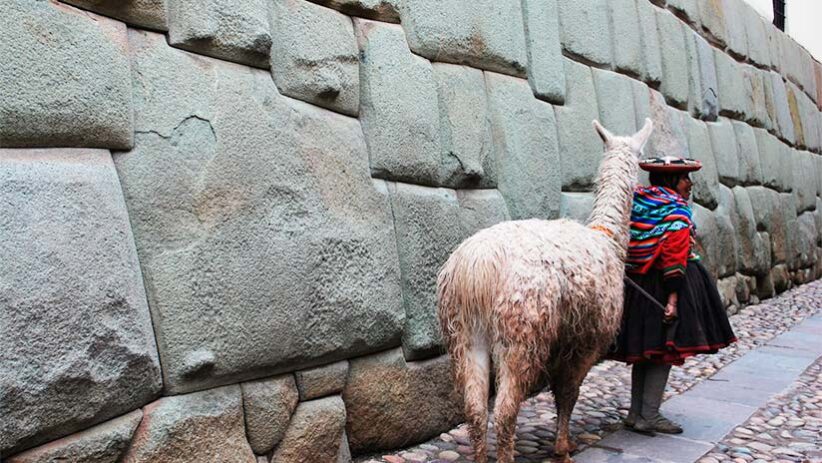
Hidden among the narrow streets of the city’s historic center is the stone of the twelve angles. This sculptural marvel has 12 perfectly carved angles that fit seamlessly into the Inca wall of Hatunrumioc street and is located one block from the southeast of Main Square. The stone itself is relatively large and forms part of the wall of the current Archbishop’s Palace. You will be able to see it by an actor dressed as an Inca sovereign located on the side of the stone and a large crowd that, generally, surrounds the area, trying to take a photo with him and the stone. Please note that it is strictly forbidden to touch the walls and the stone itself as a conservation issue.
15. THE QOSQO CENTER OF NATIVE ART
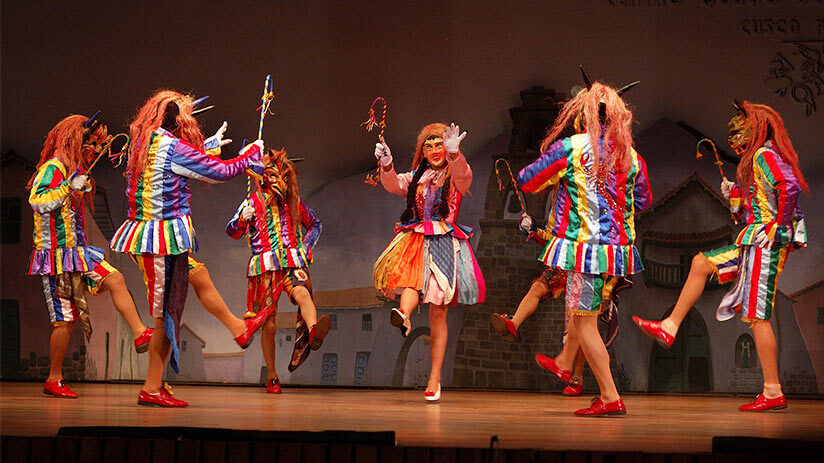
Qosqo means Cusco in the Quechua language (The native idiom of the Incas). Its meaning refers to the navel of the world or the center of all. And Cusco, the capital of the Incas, was the center of all Tawantinsuyo (Incas territory). From Cusco, the paths to the 4 Tawantinsuyo sides (east, west, north, and south) began. In this form, in 1924, a local cultural group wanted to recall the importance of the city, rescuing native dances, typical costumes, traditions, and festivals in Cusco from oblivion. The oldest cultural group in Peru had born, the Qosqo Center of Native Art. Nowadays, they have a continuous work of research and rescue of dances, and typical costumes among others that the Incas left to towns surrounding the city and in the Andes highlands. The cultural group offers a theatrical proposal of 20 native dances of Cusco and the Andes every night. From 7 pm, the spectacle begins and lasts 1 hour and 30 minutes in its own theater, and the visitor will have the possibility of appreciating the music, dance, and costumes of the dancers. Without a doubt, this is an obligatory stop on your trip to Cusco. The entrance fee is included in the General Tourism Ticket of the city. Which, by the way, costs $37, is worth 10 days and you can buy it at the offices of the Municipality of Cusco, located at Avenida el Sol Nº 103.
16. THE CUSCO PLANETARIUM
For the Incas, astronomy played a very important role in their everyday life. So much so that it influenced the planting and harvesting of crops, religious ceremonies, and architecture. And all of this can be fully explored at the Cusco Planetarium, where visitors will learn about Inca astronomy, in addition to stargazing and the constellations. The family-owned and operated planetarium is located on the main surrounding highway of Cusco, called “Circunvalación”. From here, you can enjoy breathtaking views of the stars from the top of Cusco always with the accompaniment of an expert who will assist you to identify constellations and reveal their meaning. In our Cusco travel tips, we recommend that you visit this fascinating place. Among all the things to do in Cusco, this is one of the best.
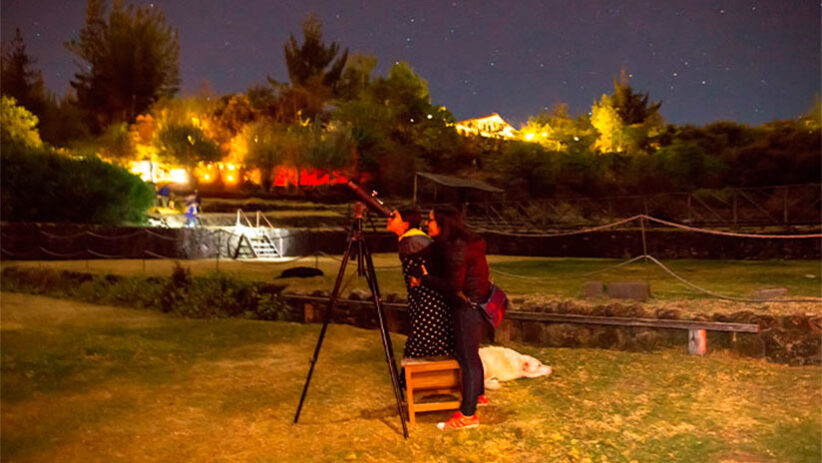
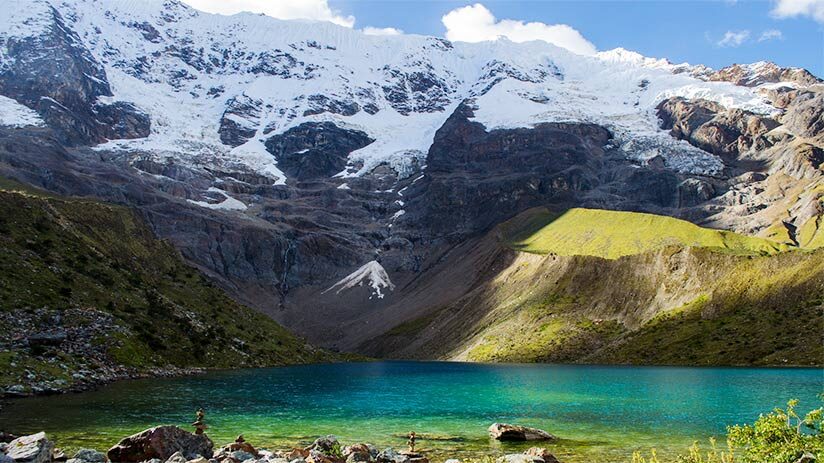
At 4200 meters above sea level, the Humantay lake is another nature jewelry that climate change and global warming unveiled to the world. In the ’80s the lagoon was totally frozen but little by little, the ice cap melted until obtaining today’s lagoon. Crystal clear water, which reflects the natural beauty of the snowy from which it was born. It is located over the slopes of Humantay, a small snow-capped mountain at the foot of the famous snow-capped Salkantay. This lagoon is close to the first camp zone of Soraypampa (the beginnings of the Salkantay trek) In the district of Mollepata, Anta province, department of Cusco. Precisely at 122 km from the ancient Incas capital. To get there, you’ll have to take transportation from Cusco to Mollepata (03 hours), after that, take transportation again to Soraypampa (45 min), and finally, begin the trekking to Humantay (01 hour). Again, we recommend you enjoy this experience through a travel agency.
18. THE INCA MUSEUM
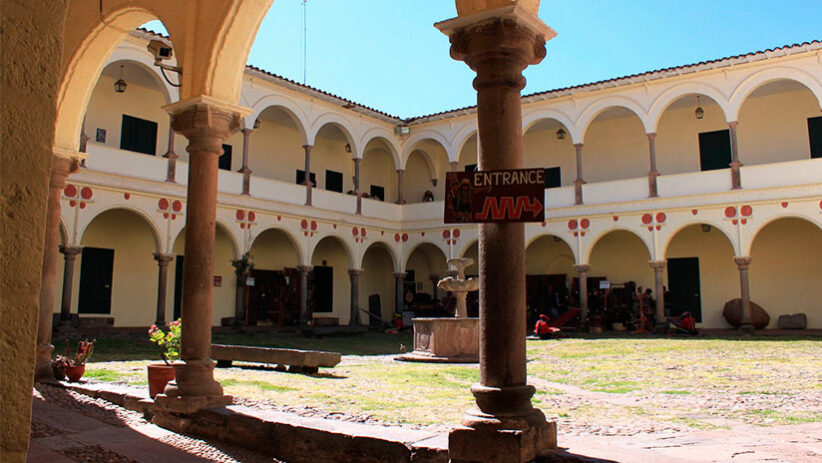
One of the best activities in Cusco is to learn the history of the Incas’ empire before visiting its archaeological rest like Machu Picchu. This museum represents a complete, illustrative, and exact of all periods of Cusco, from the Stone Age until these days. It is almost a complete Cusco tourist map to see before beginning your activities in the ancient Incas capital. It is run by the national university of the city, called San Antonio Abad of Cusco, with more than 300 years of existence, this university is the fourth oldest in Peru and the fifth in all of America. Undoubtedly, a museum with a great backrest. It has a huge collection of artifacts located in the equally impressive colonial home of a Spanish admiral, where the museum is situated. You will be able to tour twenty-four exhibition rooms that are filled with information dating from pre-Inca societies to the height of the Inca Empire and the Spanish conquest. One of the things that stands out the most is the mummified bodies in the museum, as well as the courtyard where Andean women weaved textiles. Fortunately, the information is presented in both English and Spanish languages. But it is also advisable to hire a guide for a small fee, as it makes visiting the huge museum easier. If you buy a Touristic Ticket of Cusco, the entrance to one of the best museums in Cusco is completely included!
19. THE PICANTERIAS
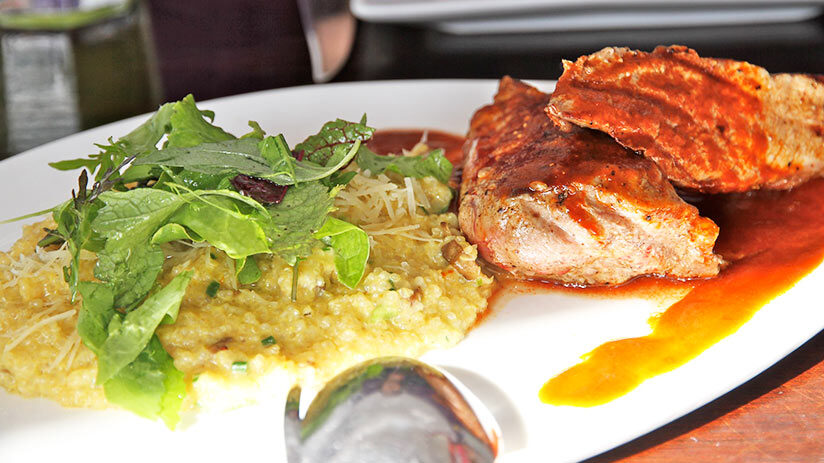
One of the best things to do in Cusco is to try the famous and renowned Peruvian and local cuisine. Believed it or not, Cusco has its own traditional cuisine and during your city trip, you can take the opportunity to try different of these traditional dishes. No need to go to fancy international restaurants (that do exist in the city, just in case) You will find Andean flavors throughout the city, in the famous Picanterias (places where spicy food is served). These traditional restaurants are formed by one big local with long tables and benches, where totally unknown people could share a table while enjoying different delighting local dishes like the Chiriuchu (Cold dish based on pieces of chicken, beef, and pork. All of them boiled and accompanied by a fried corn cake, toasted corn, and edible seaweed), Cuy al Horno (Guinea pig roasted accompanied by boiled potatoes) or a Capchi de Zetas (Stew of local mushrooms called Zetas). All of them are accompanied by the Chicha (a specie of local beer on a base of fermented corn) and the famous Picante (Stew of Andean legumes mixed with boiled potatoes pieces and red chili) The kitchen is a wood-burning stove open to the public, located at the depth of the premises. If you’re worried about your stomach, don’t worry, as Cusco municipality does sanitary condition supervision, regularly. A separate note deserves the Chocomuseo (Chocolate museum), the most important Chocolate factory in Cusco, where you will taste the cacao beans cultivated in the Jungle areas of Cusco and recognized as one of the most delights around the world. We encourage you to try it.
20. NIGHTLIFE IN CUSCO
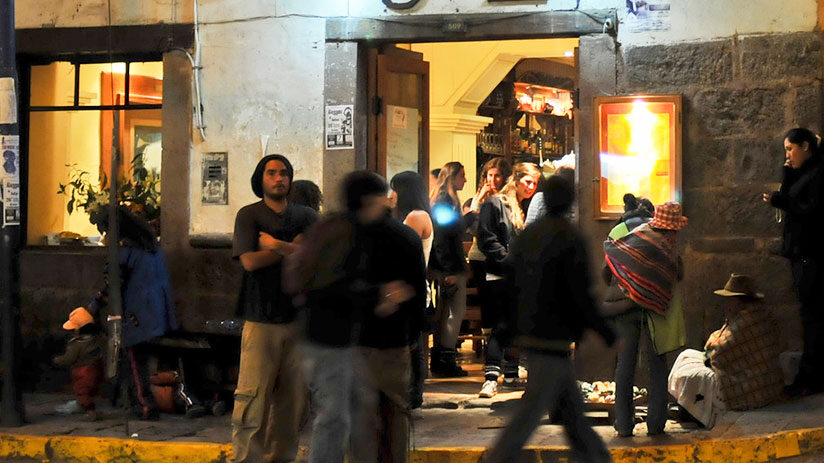
If Las Vegas, in the United States, is the city that never sleeps. Cusco, a tourist city too, is its equivalent in Peru. The city has a very active nightlife. You know, not everything is guided tours and museums. You can enjoy the many bars and clubs in Cusco. With different thematics. In this form, you can find an English bar (The Cross keys) located on Triunfo street, on the southeast side of the main square. The Paddys Pub (Irish bar) is situated at the beginning of Triunfo street, as the most representatives. Regarding discos, you will find many and for all types of public, the discos are an excellent opportunity to relax with friends and drink or dance for a while, and maybe, found love. By the way, if you are wondering if Cusco is safe to travel to, the answer is yes. Even at night, you don’t have to worry as you keep an eye on your belongings. Without mentioning that there are many police officers on every corner of the Historic Center of Cusco. Also, if you were wondering, what are fun things to do in the Imperial city? Well, this is definitely one of them.

